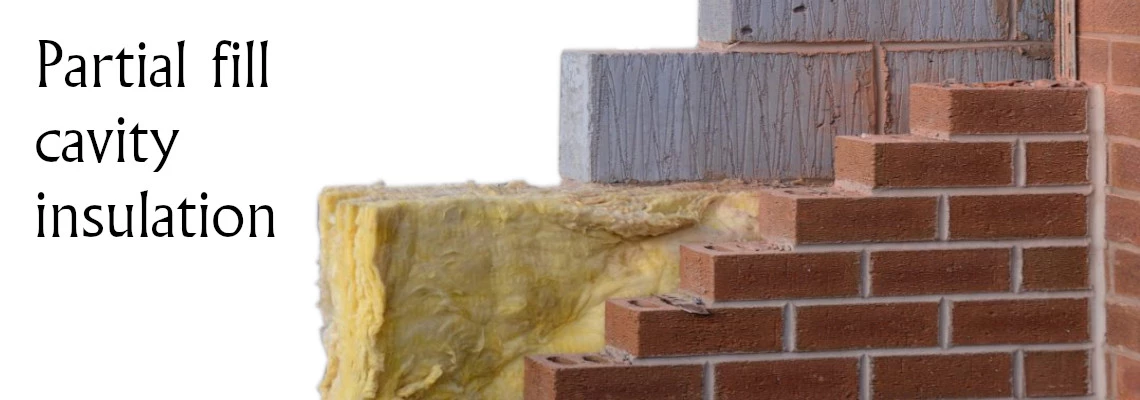
EXTERNAL WALLS PARTIALLY FILLED WITH INSULATION*
Current masonry homes are built using cavity walls. It means external walls typically feature an inner blockwork wall, a cavity and an outer wall of brick. The gap in between the layers is filled with energy-saving insulation called partial fill insulation.
In fact, fitting partial fill cavity wall insulation is a great chance to slash your energy bills and save energy at home. With fuel costs on the rise, now is a good time to invest. So let’s have a closer look at partial fill insulation. In this article, we will lay out all disadvantages related to partial fill cavity walls.
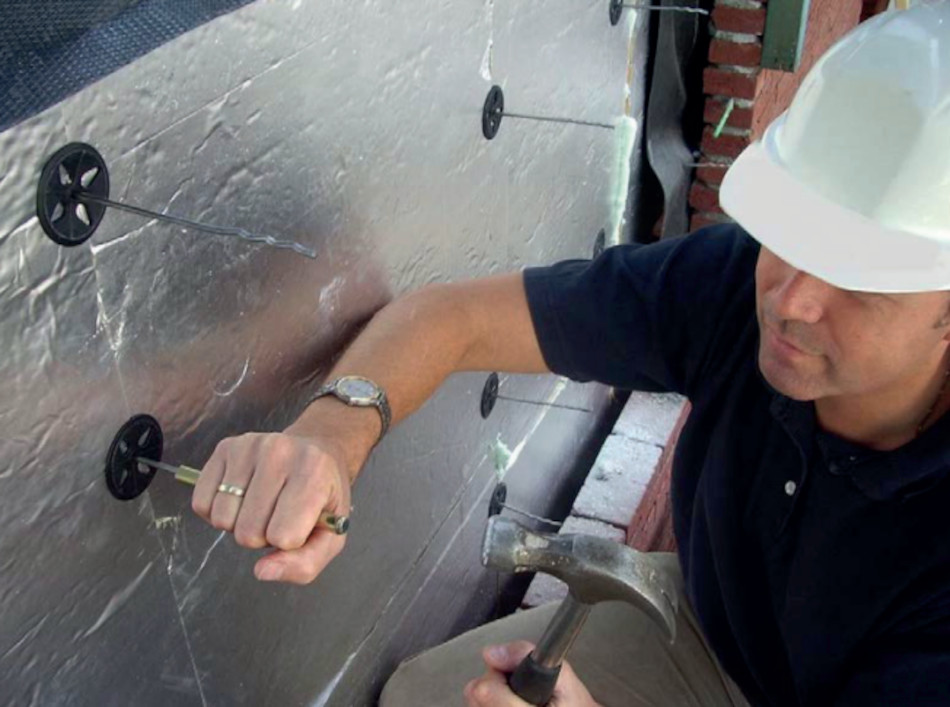
Picture credit: insulationmanufacturers.org.uk
 TABLE OF CONTENTS
TABLE OF CONTENTS
- EXTERNAL WALLS PARTIALLY FILLED WITH INSULATION
- WHAT IS PARTIAL FILL CAVITY INSULATION?
- TYPES OF PARTIAL FILL CAVITY INSULATION
- WHAT IS THE BEST PARTIAL FILL CAVITY INSULATION?
- PARTIAL FILL CAVITY WALL INSULATION DISADVANTAGES
- WHO SHOULD I EMPLOY TO FIT PARTIAL FILL CAVITY INSULATION?
- FULL FILL VS PARTIAL FILL CAVITY WALL
- HOW MANY TIES SHOULD I USE WHEN INSTALLING PARTIAL FILL INSULATION?
- ROCKWOOL HIGH PERFORMANCE PARTIAL FILL CAVITY SLAB 100MM - WHAT IS SO SPECIAL ABOUT IT?
WHAT IS PARTIAL FILL CAVITY INSULATION?
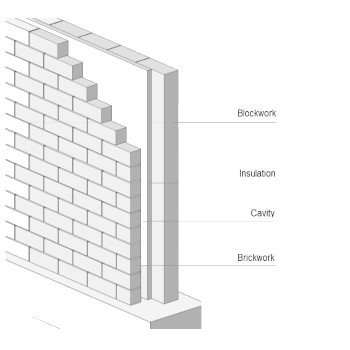
Partial fill cavity insulation is an engineered thermal product fitted straight into the cavity as new brick and block walls are built.
Partial fill cavity insulation is held in place by the wall tie clips or collars, leaving a 50mm gap between the cavity and external wall to reduce the chance of moisture tracking into the home.
The purpose of the air space in a cavity wall is to create a barrier to the penetration of rainwater to the inside face of the wall.
It also reduces the thermal transmittance (U value) of external cavity walls.
Picture credit:erikasgrig.com
TYPES OF PARTIAL FILL CAVITY INSULATION
Insulating a cavity wall partially can be done using either PIR insulation boards, mineral wool (MW), phenolic boards (PF) or Polystyrene sheets (EPS). The materials used for partial fill insulation should be of boards, slabs or batts that are sufficiently rigid for ease of handling and to be retained in a vertical position against the inner leaf inside the cavity without sagging or losing shape, so that the edges of the boards remain close butted throughout the useful life of the building.
Partial-Fill Cavity Insulation Boards are typically 1200mm x 450mm which fits in with proper wall tie spacing. They are available in various thicknesses:
25mm | 40mm | 45mm | 50mm | 55mm | 60mm | 65mm | 70mm | 75mm | 80mm | 90mm | 100mm | 120mm | 150mm | 170mm
PARTIAL FILL CAVITY PHENOLIC BOARDS
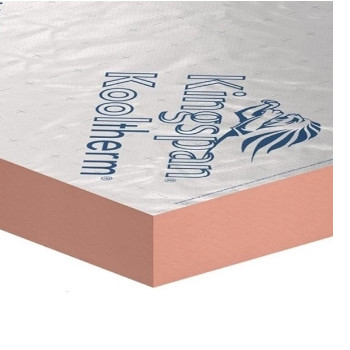 Partial fill cavity board is a premium performance insulation with a fibre-free rigid thermoset phenolic core.
Partial fill cavity board is a premium performance insulation with a fibre-free rigid thermoset phenolic core.
It provides a level of performance that is unrivalled in the world of rigid thermoset insulation materials with a thermal conductivity of just 0.018 W/mK across all thicknesses. However, phenolic products are more expensive up front and installation can require more attention to detail on site.
Products:
SR/CW Cavity Wall Insulation Board Xtratherm Safe-R
Kingspan Kooltherm K108 Phenolic Cavity Insulation Board
PARTIAL FILL CAVITY PIR BOARDS
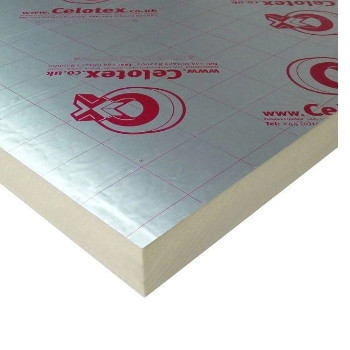 PIR partial fill cavity boards are a high performance insulation with a fibre-free rigid thermoset polyisocyanurate (PIR) core.
PIR partial fill cavity boards are a high performance insulation with a fibre-free rigid thermoset polyisocyanurate (PIR) core.
They are used to insulate partial fill cavity walls, and usually have a thermal conductivity of 0.022 W/mK.
Rigid products offer better thermal performance allowing you to specify a thinner wall or achieve a better U-value at the same thickness.
Products:
Celotex® CW4000 Cavity PIR Insulation Board
Xtratherm® XT/CW Thin-R Partial Fill Cavity Insulation
PARTIAL FILL CAVITY MINERAL WOOL BATTS
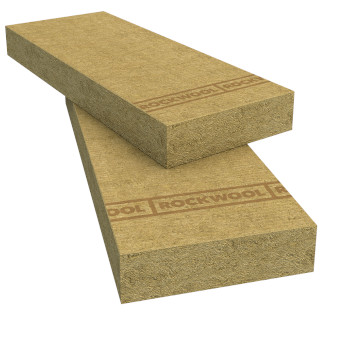 Mineral wool partial fill batt is designed to provide thermal insulation in partial-fill external masonry cavity walls, with no height restriction (additional requirements apply for buildings above 25 metres in height for partial fill).
Mineral wool partial fill batt is designed to provide thermal insulation in partial-fill external masonry cavity walls, with no height restriction (additional requirements apply for buildings above 25 metres in height for partial fill).
It can be used regardless of height and in cavities in areas of 'very severe' exposure without rendering the outer leaf. Semi-rigid batts of glass mineral wool or rockwool are the traditional choice. Their flexibility allows them to fit snugly against the masonry as well as knit together at abutments.
Products:
Rockwool® HP Partial Fill Cavity Slab
Knauf Rocksilk® RainScreen Slab
URSA 32 Cavity Wall Insulation Batts
Superglass® Superwall 36
URSA® 32 Cavity Wall Insulation Batts
PARTIAL FILL CAVITY EXPANDED POLYSTYRENE
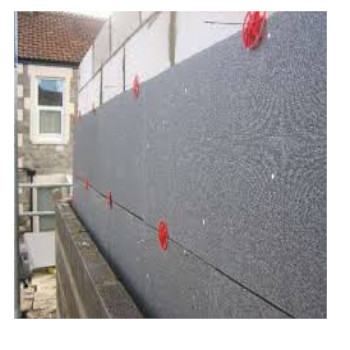 Polystyrene partial fill insulation will reduce your carbon footprint and help to decrease heating bills by limiting heat loss.
Polystyrene partial fill insulation will reduce your carbon footprint and help to decrease heating bills by limiting heat loss.
Polystyrene partial fill cavity wall insulation board (EPS 70) (1200 x 450mm - coverage 0.54m²) is manufactured from low lambda polystyrene and is a square edged panel that offers excellent thermal performance when used within masonry wall constructions to satisfy the relevant U-value requirements.
Products:
SPI Stylite Partial Fill EPS
Jablite Partial-Fill Cavity Wall insulation EPS 70 (white) and EPS HP 70 (grey)
WHAT IS THE BEST PARTIAL FILL CAVITY INSULATION?
With the recent increase in requirements for the insulation of masonry cavity walls it may well be advantageous to use one of the somewhat more expensive insulants such as PIR (polyisocyanurate) or phenolic (PF) because of their lower U-value, where a 50mm clear air space is to be maintained in the cavity, without greatly increasing the overall width of the cavity.
However, mineral wool batt is also an option. Remember, at the end of the day the best choice will depend on your project goals. If you want best performance in the thinnest wall profile, for instance, phenolic foam can deliver that. Phenolic partial fill insulation is the most expensive but also most productive type of insulation boards. Panels have a slightly higher R-value and a slightly thinner profile than PIR boards due to the manufacturing process. While PIR offers the lambda value of 0.022 W/mK, phenolic closed cell foam offers 0.018W/mK. In fact, that is only 10% better than PIR.
If you are looking for a cheaper alternative, EPS polystyrene board would be the optimal option to go for. This budget-friendly material has a high percentage of trapped air inside which makes it an excellent premier insulator.
In fact, EPS leads the other partial fill cavity insulation products when it comes to R-value per £. Why? Well, the manufacturing costs of EPS are generally lower compared to other insulating materials like PIR or Phenolic Boards. Partial Fill Polystyrene Cavity Wall Insulation Boards are a far more cost-effective alternative to PIR that offers a 20% reduction in thickness. While still offering a high thermal performance, EPS board requires slightly thicker levels to achieve the same thermal performance as PIR or Phenolic board. For example, while a masonry wall project may call for 120mm of graphite EPS, the same thermal performance can be achieved with 80mm of PIR.
PARTIAL FILL CAVITY WALL INSULATION DISADVANTAGES
There are many benefits to having cavity wall insulation (CWI) in your home. There are also few disadvantages of using partial fill insulation. In fact, thousands have blamed partial fill cavity insulation for triggering mould and damp inside. If you want to find out more about main cavity wall insulation problems click here
WHO SHOULD I EMPLOY TO FIT PARTIAL FILL CAVITY INSULATION?
It’s crucial to find experienced, trustworthy builders and trades with proven track records.
If you are about to install partial fill cavity insulation you should look for a company that’s a member of the Cavity Insulation Guarantee Agency (CIGA) or National Insulation Association (NIA).
A good installer should survey your walls before any work is done. Make sure your installation is covered with a 25-year CIGA guarantee, which will protect you if you experience problems with your insulation.
FULL FILL VS PARTIAL FILL CAVITY WALL
The key difference is that partial fill cavity wall insulation retains a 50mm air gap between the insulation and the outer brick or block leaf. The gap provides better protection against water ingress, but it’s not suitable for every project and some builders prefer full fill because there’s less chance of things falling into the space. Moreover, full-fill insulation can be slightly quicker to fit, as there’s less need to focus on how the material is held in place. It will also offer slightly better thermal performance over partial-fill for the same wall thickness. Put simply, with a 150mm cavity you’ll be able to include a full 150mm thickness of insulation; which is likely to net you a U-value of around 0.20 W/m2K on a typical brick and block setup.
HOW MANY TIES SHOULD I USE WHEN INSTALLING PARTIAL FILL INSULATION?
 Cavities up to 100mm wide require wall ties at maximum 900mm horizontal centres and 450mm vertical centres, with additional ties around openings and at corners.
Cavities up to 100mm wide require wall ties at maximum 900mm horizontal centres and 450mm vertical centres, with additional ties around openings and at corners.
Cavities wider than 100mm may require ties at reduced centres. Each insulation board should be secured at a minimum of three points to ensure adequate retention.
Wall ties should be built into each leaf with a minimum embedment of 50mm. However, some manufacturers recommend an embedment of 62.5mm to allow for site tolerances.
Drip features on a wall tie should be placed at the centre of an open cavity. The specifier must ensure that the retaining clips used are suitable for the selected wall tie.
ROCKWOOL HIGH PERFORMANCE PARTIAL FILL CAVITY SLAB 100MM - WHAT IS SO SPECIAL ABOUT IT?
The Rockwool brand is recognizable around the globe. This is primarily due to the materials used to make Rockwool insulation. Natural rock and steel slag, are known for having a high level of durability and natural resistance to decay and corrosion.
Moreover, ROCKWOOL is one of the UK's leading manufacturers of Non-Combustible, Euroclass A1 rated partial fill stone wool insulation.
Rockwool high performance partial fill cavity slab is designed to withstand those typical conditions on-site and absorb any irregularities on the inner leaf unlike other rigid boards such as phenolic or PIR. Rockwool cavity slabs, unlike rigid sheets, knit together when tightly butt jointed, eliminating heat loss caused by gaps. Furthermore, Rockwool offers noise insulation due to its innovative materials that have higher densities and random fibre standard orientation that trap sound waves and deadens vibration time. Yet, Rockwool is a breathable material allowing moisture to escape from the construction. This reduces the risk of mould and bacterial growth on the inside of the property.
Related articles:
Cavity wall. All you need to know
Best 6 passive fire protection cavity barriers.
4 types of full fill cavity insulation explained
*All the information provided in the content published on Insulationgo blog is for informational and educational purposes only. Insulationgo LTD makes every effort to ensure the accuracy and timeliness of the content, but we do not assume any responsibility for any errors or omissions.
The information presented on this blog should not be considered as professional advice or a substitute for consulting relevant experts. Before making any purchase decisions or taking action based on the information presented here, it is strongly recommended to contact the product manufacturer directly to verify the details and ensure its suitability for your specific needs.
By using this blog, you acknowledge and agree that Insulationgo LTD shall not be held liable for any damages, losses, or inconveniences arising from the use or reliance on the information provided herein. This limitation of liability applies to all users of the blog, including but not limited to visitors, readers, and subscribers.










































































































